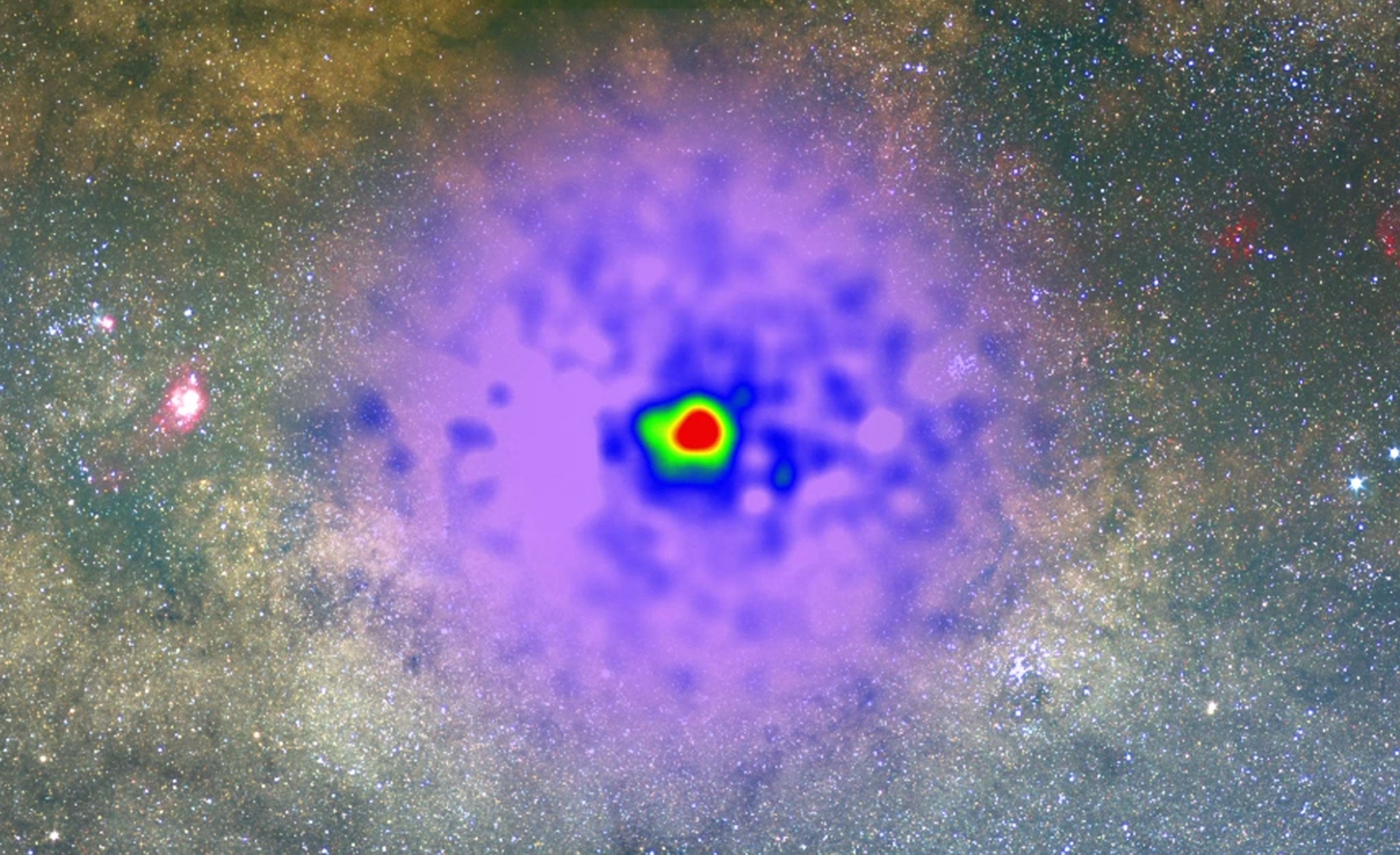Dark matter found? Gamma rays at centre of Milky Way promise clue to mystery of universe
‘We may be seeing dark matter for the first time,’ according to astrophysicists

Your support helps us to tell the story
From reproductive rights to climate change to Big Tech, The Independent is on the ground when the story is developing. Whether it's investigating the financials of Elon Musk's pro-Trump PAC or producing our latest documentary, 'The A Word', which shines a light on the American women fighting for reproductive rights, we know how important it is to parse out the facts from the messaging.
At such a critical moment in US history, we need reporters on the ground. Your donation allows us to keep sending journalists to speak to both sides of the story.
The Independent is trusted by Americans across the entire political spectrum. And unlike many other quality news outlets, we choose not to lock Americans out of our reporting and analysis with paywalls. We believe quality journalism should be available to everyone, paid for by those who can afford it.
Your support makes all the difference.Scientists in Boston have released an image which they say could be the first time dark matter has ever been captured on a Nasa telescope.
The new study of gamma rays captured by the US space agency’s Fermi apparatus picked up a signal which “cannot be explained by other alternatives” – meaning that by process of elimination what we are seeing has a high chance of being the elusive substance.
Dark matter makes up most of the material universe – yet we know very little about what it consists of or how it interacts with everything else.
But by analysing an image of gamma rays coming from the Milky Way, a joint team from Harvard, the University of Chicago and MIT in Boston have been able to pick out a bright core at the centre of our galaxy that is only currently explained by models of dark matter itself.
Experts have speculated for some time that dark matter is most likely to be observed at the centre of the galaxy – large quantities of dark matter attract normal matter, forming a foundation upon which visible structures, such as galaxies, are built.

“This is the most compelling signal we've had for dark matter particles – ever,” said Dan Hooper, speaking to New Scientist from the Fermi National Laboratory in Batavia, Illinois.
“At this point, there are no known or proposed astrophysical mechanisms or sources that can account for this emission,” he said. “That doesn't rule out things that no one's thought of yet, but we've tried pretty hard to think of something without success.”
The team took publicly available images of gamma ray light shot out from the Milky Way and, piece by piece, removed every pixel that could be explained by a known phenomenon like a supernova or particles colliding with interstellar gas.
One possible theory suggests that dark matter is made up of brilliantly named Weakly Interacting Massive Particles – or Wimps – which would collide to produce gamma rays at the energies detected by the Fermi telescope.
Tracy Slatyer, a theoretical physicist at MIT, said: “This is a very exciting signal, and while the case is not yet closed, in the future we might well look back and say this was where we saw dark matter annihilation for the first time.”
Join our commenting forum
Join thought-provoking conversations, follow other Independent readers and see their replies
Comments